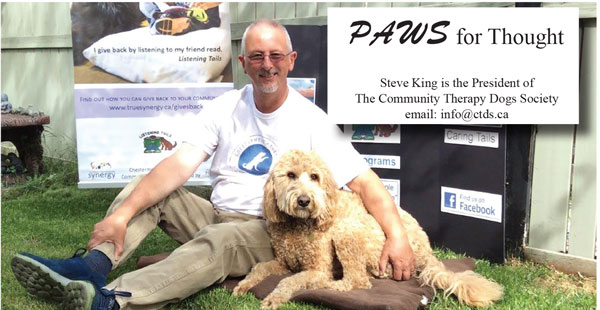We have a 13 month old granddaughter who is just starting down the road of saying her first words. Although to us it sounds mostly gobbeldy gook, to her mum, who has had 13 months of growing up with her every day, it sorta makes sense when combined with her body language. Don’t you find the same thing with your dog? A stranger may come to the house. Once you get through the initial excitement, your dog may start acting in a particular way. The stranger is bemused but, without reservation, you simply say: Rover wants so and so. Not a word, human or canine, has been uttered but you instinctively know what your dog is communicating. You have reached a point in the relationship with your dog, through day-to-day contact, learning how to read Rover’s body language and being aware of domestic routine, that you just know what he wants or is trying to do. Because of the challenge of bridging canine-human communication, we subconsciously work hard to figure out what our dogs are trying to communicate to us so we can continue to improve our relationship into the future. Fortunately or unfortunately, there aren’t many Dr. Dolittles in this world!
With our own dog, Finn, there are numerous examples every day of how he acts, postures and verbalizes what he wants or what he is trying to tell us. At night Finn sleeps in his crate in our bedroom. In the mornings, he will gently bang his paw on the floor of his crate to let us know he feels it’s time to get up. The regularity of him doing this is such that you can set your watch by it! Never having been one to bark to be let out to do his business, you need to be aware of him standing by the back door. If his waiting to be let out is not registering with us humans, he will shuffle his paws on the ground and only at the very last minute will he let out a whine to make his needs known.
Like many dogs, he has his own time schedule. After the morning nap, following his morning walk, you will find him sat in front of you with his laser stare. Give or take 5 minutes, for those of us that know him, it must be around 11:30. This is the time when, being roughly half way between his morning meal and his supper, he gets his Dentabone. The same laser stare starts around 2 o’clock when you are expected to know that it’s time for his afternoon walk. In his mind, the next important event is his daily back scratch in early evening. For this you have to know that standing next to you facing away is the signal for you to scratch the area where his tail meets his bum. The day ends for Finn around 9:30pm when he will be seen standing looking, apparently aimlessly. How wrong can you be! We humans are expected to know that is his signal for bed.
Dogs are all unique creatures with their own quirks. Ignore them at your peril!






